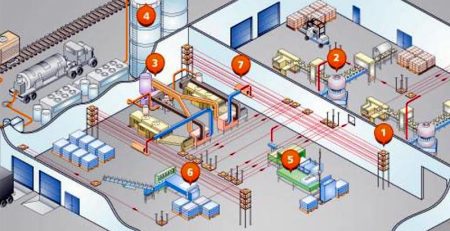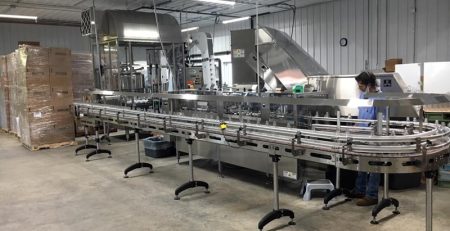Space constraints have long been a challenge for industries across the spectrum, from manufacturing plants to warehouses and distribution centers. Limited space can hinder operational efficiency, restrict growth opportunities, and increase costs associated with storage and handling. However, with the advent of advanced material handling automation solutions, businesses now have the means to overcome these limitations and optimize their spatial utilization effectively.
Understanding the Impact of Space Constraints
Space constraints can manifest in various forms, depending on the nature of the industry and the specific operational requirements. In manufacturing, limited floor space can restrict the installation of additional equipment or production lines, limiting capacity and throughput. In warehouses and distribution centers, inadequate storage space can lead to overcrowding, inefficient picking processes, and difficulties in inventory management. Moreover, tight spaces can increase the risk of accidents and hinder the implementation of safety protocols.
The Role of Material Handling Automation
Material handling automation solutions offer a transformative approach to addressing space constraints by streamlining operations, maximizing storage capacity, and enhancing overall efficiency. These solutions encompass a wide range of and systems designed to automate various aspects of material movement, storage, and retrieval. By reducing the reliance on manual labor and optimizing processes, automation enables businesses to make more efficient use of available space while minimizing operational costs.
Key Technologies Driving Space Optimization
- Automated Storage and Retrieval Systems (AS/RS): AS/RS systems utilize robotic arms, conveyors, and vertical lift modules to automatically store and retrieve goods from designated storage locations. By utilizing vertical space more effectively, AS/RS systems enable businesses to increase storage density without expanding their physical footprint. These systems are particularly beneficial in warehouses and distribution centers where space is at a premium.
- Vertical Carousels and Lifts: Vertical carousels and lifts are another effective solution for maximizing vertical storage space. These systems consist of vertically arranged shelves or trays that rotate or move up and down to deliver items to the operator at the optimal ergonomic height. By eliminating the need for aisles and utilizing overhead space efficiently, vertical carousels and lifts enable businesses to store a larger volume of goods in a smaller footprint.
- Automated Guided Vehicles (AGVs): AGVs are autonomous mobile robots equipped with sensors and navigation systems that allow them to transport materials and goods within a facility without human intervention. By automating the process of material transport, AGVs reduce the need for manual labor and enable businesses to optimize floor space by eliminating fixed pathways and dedicated lanes for forklifts or pallet jacks.
- Compact Conveyor Systems: Compact conveyor systems are designed to transport materials efficiently while minimizing the space required for conveyance. These systems often feature modular components that can be configured to fit within tight spaces and navigate around obstacles, allowing businesses to optimize the layout of their production or distribution facilities.
- Warehouse Management Systems (WMS): WMS software plays a crucial role in optimizing space utilization by providing real-time visibility into inventory levels, order statuses, and storage locations. By implementing advanced algorithms and optimization techniques, WMS systems help businesses maximize the use of available space by intelligently allocating storage locations, optimizing picking routes, and minimizing travel distances for workers and equipment.
“By leveraging technologies such as AS/RS systems, AGVs, and compact conveyor systems, businesses can optimize space utilization, streamline operations, and drive productivity gains across their facilities. “
Case Studies: Real-World Applications of Space Optimization
- Automotive Manufacturing: In the automotive industry, space constraints are a common challenge due to the large footprint of manufacturing equipment and the need to accommodate assembly lines and storage areas within limited floor space. By implementing AS/RS systems for component storage and retrieval, automotive manufacturers can reduce the space required for inventory storage and streamline material flow, thereby optimizing overall efficiency and throughput.
- E-commerce Fulfillment Centers: E-commerce fulfillment centers face increasing pressure to fulfill orders quickly and accurately while managing a vast inventory of products. To overcome space constraints, many fulfillment centers leverage a combination of AS/RS systems, AGVs, and compact conveyor systems to maximize storage density and streamline order fulfillment processes. By automating material handling tasks and optimizing storage locations, these facilities can meet customer demands while minimizing operational costs.
- Food and Beverage Distribution: In the food and beverage industry, perishable goods require specialized storage and handling to maintain quality and freshness. Space constraints in distribution centers can pose significant challenges for storing a diverse range of products with varying storage requirements. By deploying vertical carousel systems and temperature-controlled storage solutions, food and beverage distributors can optimize space utilization while ensuring compliance with food safety regulations and minimizing waste.
Overcoming Implementation Challenges
While material handling automation solutions offer significant benefits in terms of space optimization, their implementation may present challenges for businesses, including initial investment costs, integration with existing systems, and workforce training. To overcome these challenges, businesses must carefully evaluate their operational needs, conduct thorough cost-benefit analyses, and work closely with automation vendors to develop tailored solutions that align with their goals and objectives.
Material Handling Solutions in West Michigan
Space constraints pose a significant challenge for industries across the globe, impacting operational efficiency, capacity, and safety. However, with the advancement of material handling automation solutions, businesses now have the tools and technologies needed to overcome these limitations effectively. By leveraging technologies such as AS/RS systems, AGVs, and compact conveyor systems, businesses can optimize space utilization, streamline operations, and drive productivity gains across their facilities. As industries continue to evolve and adapt to changing market dynamics, the role of material handling automation in eliminating space constraints will become increasingly crucial in driving sustainable growth and competitiveness.
If you are interested in our material handling automation services, or would like to learn more about any of our automation equipment, please contact us here or give our dedicated support team a call at (616) 874-4041.











